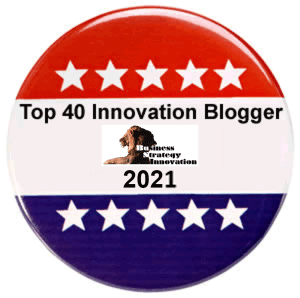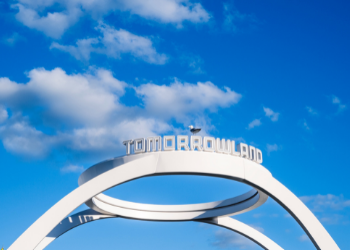We all know that you can’t innovate if you don’t collaborate, yet how do we manage to take the time to have the courageous, candid and creative conversations that a collaborative work environment requires?
Conflicting priorities and ever-present digital media distractions constantly compete for our attention. Even when we manage to get everyone in the same room, or on the same line, it seems most people have their head stuck in a device signaling that we’ve lost the fine art of conversation, never mind creative ones.
So, what can you do to get more creative ideas, to enable people to think creatively and critically, from the time you can get from your team, and have creative conversations, no matter where they are, or on what technology is involved?
Where attention goes energy flows
Most of us have been challenged with finding effective ways of breaking and disrupting people’s habitual ways of working and trying to capture their attention. With the intent of exploring how to use peoples’ differences and diversity to help solve complex problems, (the #1 skill identified by the World Economic Forum needed to thrive in the fourth industrial revolution) quickly and efficiently.
Whilst most of us are aware of the value disruption can potentially bring in effecting change and learning, it’s not always an easy situation to deal with, simply because it often creates discomfort & pain. This is because it often results in a sense of uncertainty & instability, which we, as people, are neurologically wired to react to & move away from.
Paradoxically most of us also know that without some kind of disruption to create a crack or an opening, deep learning, change & creativity seldom occur.
It’s not about being nice, or soft, it’s all about developing gumption & grit
Gumption is a new leadership & coaching attribute that is particularly relevant to coaches and leaders, as an important attribute to cultivate in today’s VUCA world.
It is defined by the Cambridge Dictionary as “the ability to decide what is the best thing to do in a particular situation, and to do it with energy and determination.” For those of us who grew up with a very handy container of Gumption in their kitchens know that “GUMPTION Multi-Purpose Cleanser is a mildly abrasive cleaner that delivers a deep clean without the use of harsh chemicals or bleaches!”
This means that the first step is to cleanse your mind of the first system thinking as to how things “should” and “ought” to be. To pause, retreat and reflect before deciding what intelligent action to take & to energetically pursue what “could possibly” be, with energy & determination.
In recent article “5 Characteristics Of Grit – How Many Do You Have?” by Margaret M. Perlis, she begins it by describing how she met with close friends who have worked in education with adolescents for over 40 years “when I asked what has changed with regards to the character of kids, in unison they said “grit” – or more specifically, lack thereof. There seems to be a growing concern among teachers that kids these days are growing soft.”
According to the Merriam-Webster dictionary, grit in the context of behaviour is defined as “firmness of character; indomitable spirit.” Angela Duckworth, in her TED talk, based on her studies, adapted this definition to include “perseverance and passion for long-term goals.” Stating that it’s the constancy of your tenacity, based on the degree to which you can access, ignite, and control it, is what really matters. That being risk-averse, and being unwilling to embrace and learn from failure, is the biggest inhibitor towards developing the Grit (and Gumption), necessary to survive, achieve & thrive in VUCA times.
Gumption and grit are synonymous in innovation
This requires people to let go of being “nice” worrying about being politically correct, to develop innovation and collaboration, by being intentionally & safely contrary, provocative & disruptive involving;
- Gumption; deeply cleansing our minds, to let go of old fixed, conventional & avoidance mindsets, risk adversity, fear of failure, complacency & other normal & habitual resistance factors to change they might have, without making them “wrong.”
- Grit; passionately persevering being contrary, provocative & safely disruptive to achieve innovation goals & outcomes.
Being provocatively competent
At ImagineNation™ we teach coaches, leaders, teams, and organisations to embody & enact gumption & grit by enabling them to develop an extremely subtle, artful & incredibly powerful generative skillset to become provocative competent in generating creative conversations that build collaborative work environments.
This involves both first and second system thinking:
- Firstly, being able to work both with “what is” going on for the person, then having the gumption to detach from it & flow with it. Essentially, cleansing their own mind of judgement & evaluation, & enabling the client or the person, to do the same.
- Secondly, having the grit to then move, as well as the client, or person tenaciously & simultaneously, towards “what could be” possible & available for them. Considering the context of an innovation outcome or a goal, to elicit a crack or an opening for learning & change.
The characteristics of provocative competence in creative conversations
It’s all about having the gumption & the grit to discard “being nice” & create intentional disruptions. That safely opens people’s minds & hearts in ways that rock the boat, challenge the status quo, expose any elephant’s & sacred cows & any other resistant or avoidant factors that people hide behind.
The aim is to disrupt people’s business as usual mindsets, behaviours & patterns to get to the deep core of the problem, resistance or avoidance factor.
To challenge, deeply cleanse people’s minds and hearts of their habitual patterns, to create cracks, openings and thresholds for generating creative ideas and innovative solutions that ensure future success.
From our research and experience, we have identified seven key characteristics of the provocative competence required to facilitate creative conversations and collaborative work environments:
- Candour is about being authentic, open, honest & frank, calling it as it is, without judgement and with detachment, even if it hurts.
- Courage is about being firm, bold and brave, in the face of difficulty and challenge, being willing to confront and overcome fears.
- Curiosity is about being inquisitive, coming from an open, beginner’s mind, and desiring to learn or know more about something or someone, dispelling judgement and with detachment.
- Confidence involves feeling or believing that one can have faith in, or rely on self, someone or in succeeding in achieving an outcome or a goal.
- Compassion involves feeling distressed, concerned and empathic to the suffering or misfortune of another, often including the desire to alleviate it.
- Conscientiousness is about being careful & painstakingly meticulous in achieving the outcome of the goal, demonstrating conviction & commitment to go for gold.
- Connectedness involves a state of being joined or linked, a feeling of belonging to or having an affinity with a particular person or group, eco-system or whole system.
Why being provocatively competent really matters
In the Digital Age, to thrive in the Fourth Industrial Revolution, where even robots are now being programmed to have social intelligence and embrace a growth mindset, that enables them to interact more effectively with us humans, we need to focus our attention on facilitating creative conversations and building collaborative work environments.
If people lose their attentional capacity and ability to be present to others, in order to have real and creative conversations, then how can we work together to collaborate & innovate? How can we work together to solve the range of complex and wicked problems, confronting us as teams, organisations, and communities, if we don’t co-create a collaborative work environment?
If we can’t be contrary, provocative and disruptive, how will we, and those people we interact with, team and collaborate with, have the creative conversations that a collaborative work environment requires to harness people’s collective intelligence?
If we can’t develop the key skills in creative and critical thinking where differences, disagreements, and deviations create the dissonance and disruption necessary for the cracks & openings for new ideas & solutions to emerge through creative conversations, how will we survive and thrive in the Digital Age & VUCA times?
This is Part One of two blogs on The Art of Creative Conversations, focusing on the first phase, which is around Preparing for a Creative Conversation.THRO
Find out about The Coach for Innovators Certified Program, a collaborative, intimate & deep personalized learning program, supported by a global group of peers over 8-weeks, starting October 22, 2019. It is a deep blended learning program that will give you a deep understanding of the language, principles & applications of a human-centered approach to innovation, within your unique context. Find out more.
At ImagineNation™ we provide innovation coaching, education and culture consulting to help businesses achieve their innovation goals. Because we have done most of the learning and actioning of new hybrid mindsets, behaviors and skill-sets already, we can help your businesses also do this by opening people up to their innovation potential.
Contact us now at janet@imaginenation.com.au to find out how we can partner with you to learn, adapt and grow your business in the digital age.











